UMPCs Generate Buzz At CES
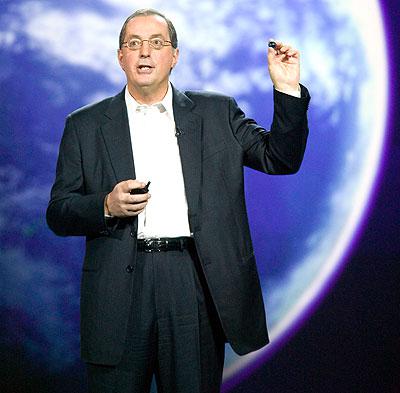
Intel CEO Paul Otellini evangelized for a 'proactive, personal Internet' accessible via pocket-size PCs in his keynote at the Consumer Electronic Show in Las Vegas earlier this week. And now that Moore's Law has had a solid four decades to make such a thing possible, OEMs like Samsung and OQO are leading the field with ultra-mobile personal computers (UMPCs) and mobile Internet devices (MIDs) that cost a pretty penny but pack a fully functional PC punch.
Here Otellini provides a visual of just how far the miniaturization of transistors has come since Intel founder Moore first declared his law. Holding up a marble to represent a nanometer, he points out that by comparison a meter would be the size of the planet Earth. Point taken, but it would have been funnier to see Otellini try to palm 45 marbles.

Samsung's Q1, along with OQO's 02, is one of the few UMPCs we saw that's actually available for purchase right now. The Q1 is built on Intel's ultra-low voltage Celeron microprocessor, but future editions will feature the chipmaker's Silverthorne chip due out this quarter. Users navigate via the 7" WVGA touch screen LCD, while the Q1's 54 Mbps of wireless throughput and built-in array microphones enable VoIP phone calls. Online retailers price various configurations of the currently available Q1 at between $800 and $1,650.
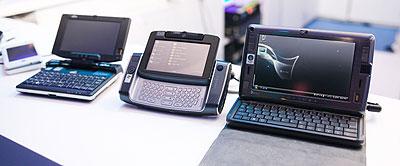
UMPCs and MIDs on display at Intel's CES booth come in a variety of shapes and sizes. Intel's ultra-low voltage Menlow platform for these devices, comprising the Silverthorne microprocessor and Poulsbo chipset, is due to be launched later this quarter.
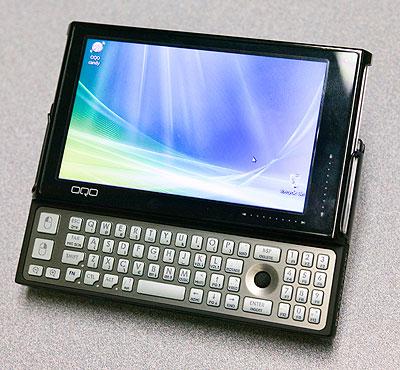
Unlike the UMPCs and MIDs displayed by Intel, OQO's 02 is built on a processor from VIA -- though an OQO rep at CES told us the company would be closely watching Intel's progress with Menlow, as well as ultra-low voltage chips Advanced Micro Devices plans to release in the coming year.
The 02 runs Windows XP and Vista and is priced at between $1,299 (1.2GHz CPU, 512MB DDR2 SDRAM, 40GB hard disk) and $2,349 (1.6GHz CPU, 1GB DDR2 SDRAM, 32-64GB solid state drive). It also features embedded Mobile WiMAX for Sprint's Xohm Network, which OQO demonstrated at Sprint's booth at CES.
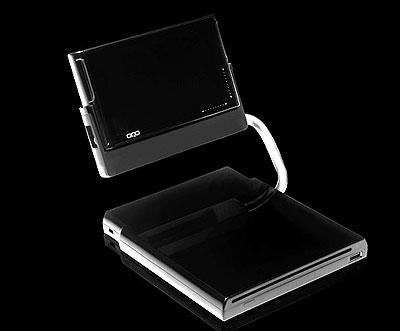
Docking stations for the OQO 02 cost $299 for a CD-RW drive version and $399 for one with a DVD-RW drive. Other upgrades and options for the 02 include Windows XP Professional, Windows Tablet PC Edition 2005, Windows Vista Ultimate, a sunlight-optimized display, Sprint Mobile Broadband EV-DO and Verizon Wireless Broadband Access EV-DO.

Here's a Toshiba mobile Internet device concept built on Intel's Menlow platform. Among the dozen or so UMPCs and MIDs that Intel displayed at its CES booth, almost all are months away from general release.
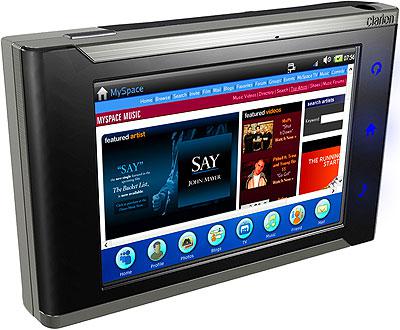
Another MID concept for Menlow, this one from Clarion. So what's the difference between a UMPC and a MID, anyway? It's not exactly clear-cut. From what we can gather, a UMPC runs Windows while a MID runs Linux or some other non-Windows operating system.
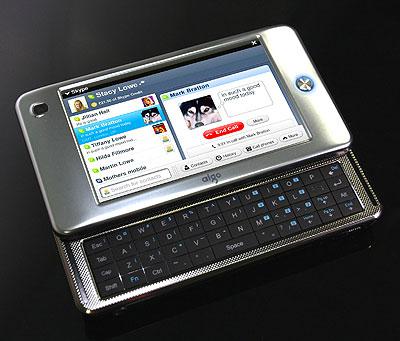
This is a MID from Aigo built on Intel's Menlow platform. As prices drop for solid state drives even as their usage lives are extended, many builders of MIDs and UMPCs are offering SSD versions of their devices.

Notebook king Lenovo isn't ignoring the potential market for much smaller PCs and Internet devices. This MID concept on display at Intel's CES booth is also a Menlow-based product. Industry watchers projecting the growth of the MID and UMPC markets expect that the devices will first find purchase with outdoors-based mobile workers and certain vertical sectors, then blow up in the mainstream sometime down the line.
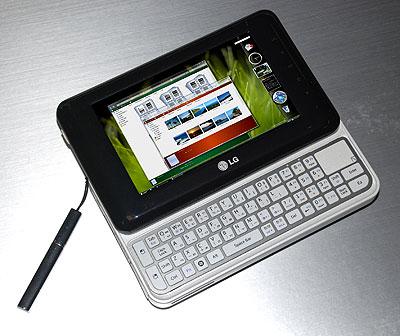
LG Electronics is another major OEM that's exploring the MID space, as evidenced by this conceptual device based on the Menlow platform. Analysts surveyed by ChannelWeb are mixed about the development of a market for MIDs and UMPCs -- some are bullish about rapid sales growth in 2008, while others see the technology as a year or more away from making a big impact.
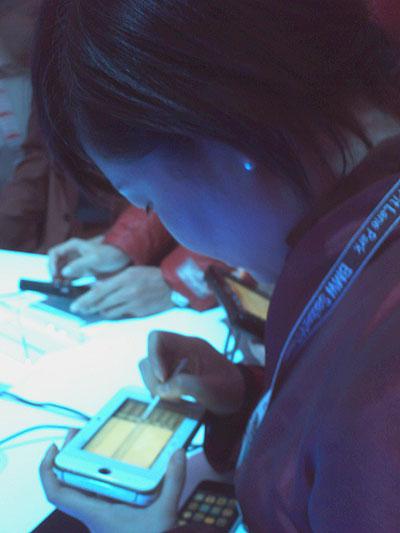
A visitor to Intel's booth test drives one of the mobile Internet devices that Intel CEO Paul Otellini claims are part of "the largest opportunity to redefine consumer electronics and entertainment since the introduction of the television."